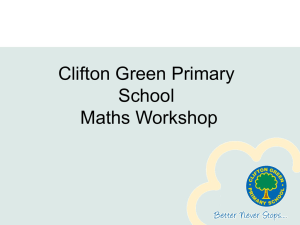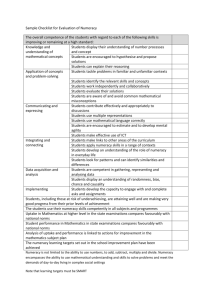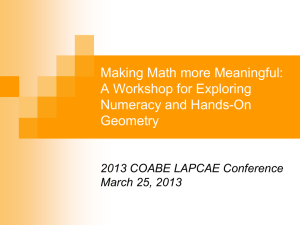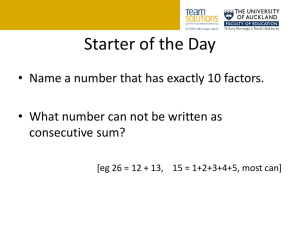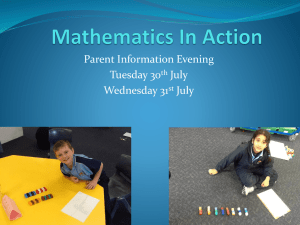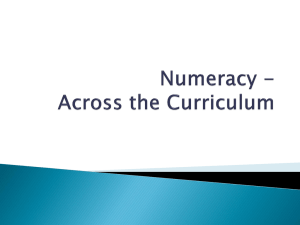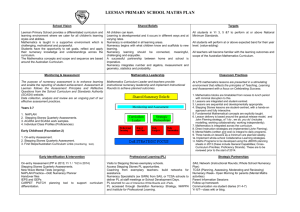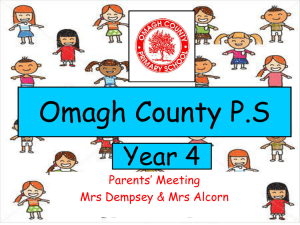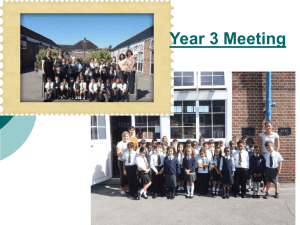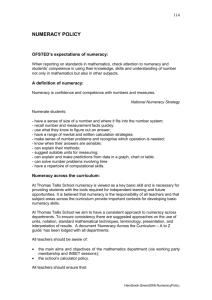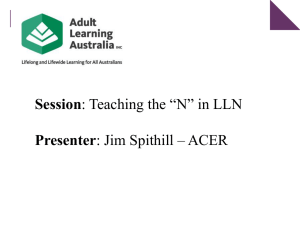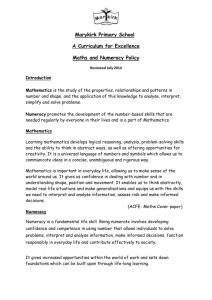NUMERACY ACROSS THE CURRICULUM
advertisement
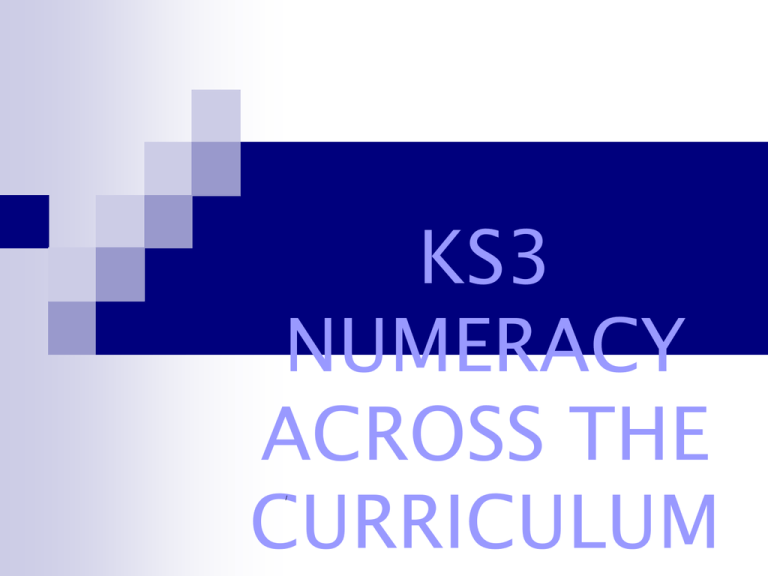
KS3 NUMERACY ACROSS THE CURRICULUM / How would you do it? Without discussion, complete the following calculations using any pencil and paper method with which you feel most comfortable. 1. 2. 3. 4. 546 + 268 = 546 – 268 = 329 x 28 = 765 ÷ 17 = What is Numeracy? Numeracy is a proficiency which is developed mainly in mathematics but also in other subjects. It is more than an ability to do basic arithmetic. It involves developing confidence and competence with numbers and measures. It requires understanding of the number system, a repertoire of mathematical techniques, and an inclination and ability to solve quantitative or spatial problems in a range of contexts. Numeracy also demands understanding of the ways in which data are gathered by counting and measuring, and presented in graphs, diagrams, charts and tables. Framework for Teaching Mathematics yrs 7 to 9 - DfES Why is Numeracy across the curriculum an issue for us this evening? In all areas of the curriculum mathematical language, notation and techniques relating to each of the subjects is used frequently, therefore the students need to understand that the skills learned in maths lessons may be required when working in science or technology for example. The Numeracy Strategy has moved the teaching of mathematics forward in order that the students understand their methods. The methods they are using may be very different from the standard algorithms that many of us were taught but a deeper understanding of numeracy means that skills are more easily transferable. It is important that parents understand that different methods are used in numeracy at school, so that when they are helping with homework they are aware that the standard method they were taught may not necessarily be the most appropriate for that piece of work. Consistency of approach Discuss in groups the methods used based on personal experiences. Were there a variety of methods used? Use of a number line Grid method Example, 248 x 58 Napiers Bones Division by chunking Food for thought! How can you be sure that poor numeracy skills are not preventing them from making progress in other subjects? Pupil Forum - Numeracy Students were selected from middle ability maths sets in years 7, 8 and 9. They were all able to give examples of where they and used maths in other lessons and give examples. They were asked to consider their numeracy skills and whether they had a positive or negative impact on their learning in other subjects. They used discussion groups and recorded their experiences using diagrams and bullet points. And here’s what they said………. “I found it difficult to read the scales. I felt really stupid. When I eventually put my hand up and asked, the teacher explained it really well.” “I couldn’t remember how to convert measures – I’m so glad my mum has done cooking with me at home - this really helped!” “Science is just maths in disguise.” “Geography is all about collecting information and putting into a graph, like traffic surveys and river measures. I’m glad we learnt about graphs in maths.” What have we done to help students with their numeracy across the curriculum? Curriculum Audit Staff Training Team Teaching Peer observations What Next? …. Be assured that if you are confident in supporting your child in Numeracy you are in fact supporting their learning across the curriculum. Do not hesitate to contact us if you need any further information or advice on how to help your child. khusain@saffronwalden.essex.sch.uk
